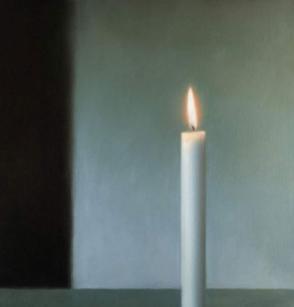Having booked out the performance lab on campus, I was helped by technicians Ecka and Rory. They showed me what equipment was available to use. I then proceeded to create the project setup.
I used all available guitar amps and placed the two small amps on top of two bigger ones, spacing each pair roughly 3 metres apart. Then I plugged in my sampler and loaded the sounds which I recorded the day before, connected the midi sequencer and sent the individual samples out of the eight multi-outputs to the guitar amps and monitor speakers.
Having settled on a configuration for what sample would go to which speaker and the loudness of each sample, I set up the means to record the soundscape: a field recorder connected to binaural microphones. I did not monitor the input signal by ear but simply through watching the level meter to ensure there was plenty of headroom and that there would be no clipping in the recording.
Once everything was in place and ready to go, I started to play with the sound objects in realtime and through the arpeggiator/sequencer on the Roland SH-01A. As I would find ideas I liked, I would decide to start recording and announce a designated test number to the recording audibly for later reference and distinction between one another.
There is more detail in the video of the physical arrangement for the soundscape.
I enjoyed the process very much and look forward to future developments of this idea as the base for music concrète works. I would like to expand my use of tones and timbres in gathering sound objects to work with, as well as speaker placement in the room. I would also like to try this idea again in another form with moving microphones to play with amplification and phasing.
I also think that this method of working will most likely extend into my work in conventional music genres (dance music, written songs, hip hop, etc.)
In future instances of this working method, I would definitely consider using prepared score or a visual aid as a means to have a central focus or guide for the composition as Ingrid and Milo had demonstrated in a few of their lectures e.g. Text scores, imagery. In this instance I preferred to work without any as to not have a predetermined intention for the sake of focus on the sounds themselves in the space, leaving imagery of the narrative, or the lack of, to the listener.
